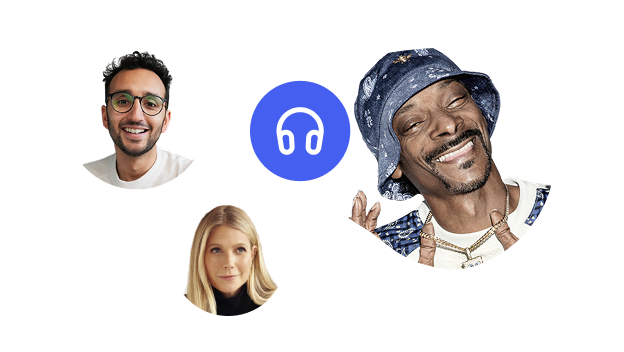Educators need to provide for the needs of all students. Many require behavioral support, which is sometimes challenging to give in public schools. In these cases, some form of academic intervention often works best.
That’s where a multi-tiered system of supports (MTSS) comes in.
MTSS provides teachers with ways to support students with special needs. It’s a professional learning framework that provides educators with a toolkit for teaching students with disabilities. This article looks at MTSS in more detail and discusses some tools it often uses.
What is a multi-tiered system of support?
An MTSS is a tiered professional development and learning structure. It uses a data-driven approach to match student assessments with their academic needs. The result is a high-quality learning framework that improves student success.
Using data, educators create frameworks to ensure that most students respond well to core instruction. This data-driven approach also makes it easier to identify students who need more help.
What are the three tiers of MTSS?
MTSS has three tiers, which teachers can use to gather more information about students.
Tier 1 – the whole class
Every student in a general classroom falls into this tier. These students generally have strong problem-solving skills, which they can use in group work.
The school monitors all students in the class to identify any who struggle. These students advance to Tier 2.
Tier 2 – small group interventions
Students in this tier receive targeted support via small group teaching sessions. Most also participate in Tier 1 lessons along with these interventions.
These lessons focus on individual learners and their issues with decision-making and problem-solving. Progress monitoring is in place to identify students who don’t make progress in this tier.
Tier 3 – intensive intervention
More intensive support, such as individualized lessons, is offered to students in this tier. A student may still spend some time in the general classroom. But they’ll spend most of their time in sessions designed to give them the necessary resources.
An example of MTSS in action
Though the MTSS tiers are standard in all versions of the framework, their application can vary. Here are two common examples.
Response to Intervention (RTI)
This version of MTSS helps students who struggle academically. A school district may use it to identify learners who have special needs.
In this case, the MTSS tiers exist to provide increasing levels of support based on benchmarks the school sets. Teachers also often use progress monitoring tools to assess students and determine their appropriate tier.
RTI helps teachers identify early signs that a student may need particular resources. However, it’s not a special education program in and of itself.
Positive Behavioral Interventions and Supports (PBIS)
Schools often use PBIS to promote good behavior and safety skills.
Students receive instruction on how they should behave. The teachings always have positive connotations. For example, the school may instruct students to “listen carefully” instead of telling them “don’t talk back.”
Again, the tier system applies here. Students who struggle with the instructions move into the next tier. Those who continue to struggle receive more intensive teaching. Both RTI and PBIS can apply at every grade level.
Tools that support MTSS
Teachers have to engage in data-based decision-making with MTSS. Furthermore, MTSS is not a universal screening process. Differences in demographics and learning ability play into how such a system works.
Thankfully, teachers have access to various tools and templates to help them create their MTSS frameworks.
Rubrics
A rubric is any scoring tool that helps a teacher judge the quality of a student’s work. The tool also often details levels of quality for the criteria it defines.
For example, imagine you’re a high school teacher working with English learners. You may use a rubric to assess how well a student speaks the language. That rubric may have quality indicators, such as “Outstanding,” “Good,” and “Requires Improvement.”
In an MTSS framework, those falling into the “Requires Improvement” category are likely students who’d benefit from Tier 2 or Tier 3 intervention.
Rating scales
Rating scales work similarly to rubrics. The key difference is they are closed-ended, meaning they focus on answering precise questions about performance.
Simple examples include questionnaires that let people rate their satisfaction level on a scale of 1 to 5. In MTSS, a rating scale can provide the grounds for evidence-based intervention. Students who score poorly across multiple criteria are often candidates for special education.
Surveys
Surveys, like rating scales, use fixed options to answer questions. But with surveys, the student may be a more active participant.
For example, a teacher could hand out a confidential survey to an entire class. That survey may contain questions that allow the student to assess how they believe they’re doing in certain subjects.
Teachers can check these results to see if any students believe they need extra help. Of course, school districts can also use surveys as a way for teachers to assess their students.
Checklist
Checklists distill questions and criteria down into simple yes or no answers. Again, they involve asking a question or making a statement. The teacher then provides a simple yes or no response to that statement.
A basic example could be, “does the student listen well in class?” A “no” for this question could indicate the student has a learning disability that affects attention. If combined with similarly negative responses to other questions, the checklist may indicate the need for intervention.
Text to speech apps
Unlike the other items on this list, text to speech software isn’t a form of assessment. Instead, it’s a tool teachers can use to provide special education to students.
Teaching dyslexic children is a good example. Many of these students have trouble reading, which assessment tools may highlight.
The assessment may trigger a teacher to provide access to a TTS app. The student can then use this app to read text aloud for them. As a result, the dyslexic child can keep pace with the general classroom because they no longer have to struggle with reading.
How Speechify can help with MTSS implementation
Speechify is a text to speech software with several classroom uses. Students can use Speechify to read text aloud, which is ideal for those with dyslexia. As a result, Speechify can be a helpful addition to the later tiers in an MTSS system.
Speechify is available in 14 languages and has Android, iOS, macOS and Google Chrome versions. Try it for free today to see if it fits your classroom well.
FAQ
What are MTSS strategies?
MTSS strategies help teachers assess the needs of their students.
What are the benefits of MTSS?
MTSS allows teachers to identify children with special needs.
What’s the difference between MTSS and traditional education?
The three-tier system and individual interventions are the most significant differences.
What is the most important component of MTSS?
A teacher who can interpret results effectively is a crucial component of MTSS.





